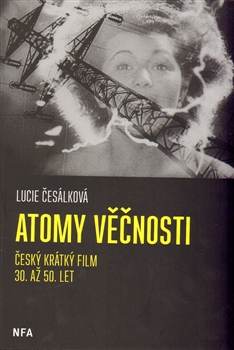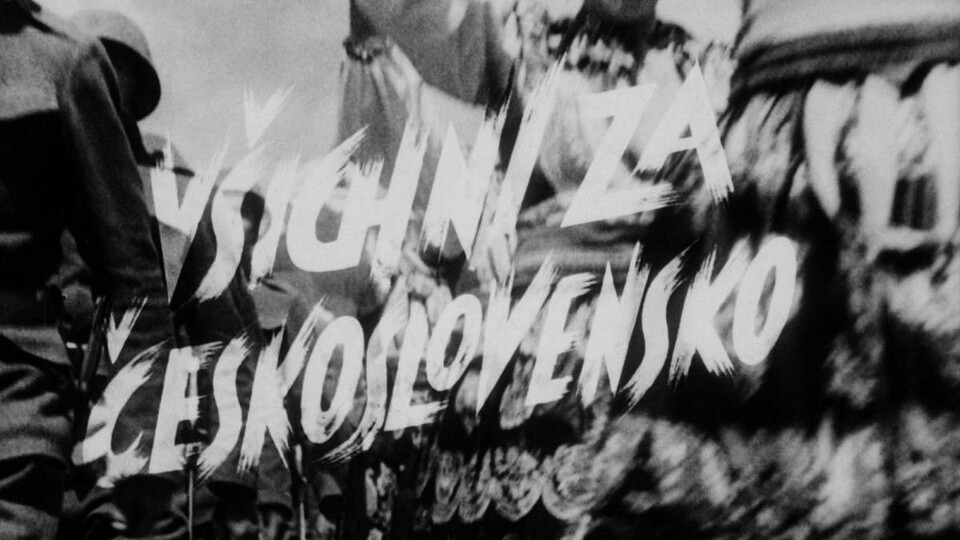How to Capture a Sea of Short Films
Lucie Česálková in her book, Atoms of Eternity, which was published in the autumn of 2014 by the National Film Archive, deeply probed a yet poorly explored field of short films. Amongst the film universe these "short, small, excessive, lacklustre or parasitic Cinderellas"1) glisten, yet for their ability to relatively transcend time. They lie on the edge of interest of both film experts and the public. Lucie Česálková focused on film production, which completely defies stereotypes of popular and entertainment films. You can get an idea of what Česálková attempted to do in her comprehensive, in-depth research and expedition to a sea of short film, in a comment of Karel Beníšek in the film of Jiří Lehovec, Divotvorné oko (The Miraculous Eye, 1939): "There has been a sea of schemers and stars in front of the lens. We want to show you something unusual, something that you have not yet noticed. These are minor dramas and comedies of human everyday life, the beauty of the simplest objects, a modern fairy tale of the most mundane things. All that is needed is to present them to the miraculous eye of the camera." It should be noted, that in the seeming unattractiveness of "minor dramas " in the production, there lies hidden an incredible wealth of information and insights, captured in the immense sea of moving images devoted to science, research, education, upbringing, enlightenment, promotion or agitation in changing times, but also experimentation and the creation of visual form of film expression. It is a valuable documentation of the Czech historical, social, political and cultural development, in many cases emphasized by high artistic value.
For a long time Lucie Česálková comprehensively mapped the extensive archives for original resources of a diverse nature. Educated, but not completely detached from traditional approaches, she journeys to sort out the nature, meaning and web of short film production in changing social and political conditions from the time period of the 1930’s to the 1950’s. At the same time, she seeks to anchor the past discourse of these works in the context of contemporary film theory and history. The author summarizes her findings from her exploration of development, principles and conditions of Czech short production with a scientific, informative, educational, moral and experimental aspect. In the defined time period, she analyses the conditions of production and the complex web of context and influence, on the basis of which she can imply and define the diversity of systematic values as well as the interdisciplinary nature and serviceability of short film. Emphasis is placed on an analytical view of the transformation of the institutional background conditions, on its formation and economic aspects, not leaving out influential factors on relationships and the approach of filmmakers to the commissioners of the films.
One train of thought woven throughout the book is attention to multimedia transformations of expressive and aesthetic values of authors, creators and independent undertakings. Short film at the time also figured as an experimental laboratory for unique visions, new stylish techniques and expressive media. This search for a new vision of moving images had significantly contributed to the cultivation of visual literacy in a hybrid mix of genres, forms, procedures and approaches of artistic, scientific and utilitarian significance, for example advertising and industrial discourse.
When mapping the spectrum of short films, Lucie Česálková was constrained by boundaries defined primarily by the utilitarian beginning of film media, which were being formed foremost in the scientific, research, educational and behavioural fields. She expands the range of short film, stating the contextual conditions for the production, defining the purpose and direction of filmmakers at various stages of a developing society. She describes emerging and dissolving film companies, their focus, corporate politics and aim of purpose. She also draws attention to the practical aspects and effects of documentation, information, research, education, outreach and agitational contexts in the changing historical and political development of the country. The defined field of research presents a very complex and complicated issue of film history, which Lucie Česálková manages to outline clearly and comprehensively in a reconstruction of relationships and ties in the non-profit sector of short film. The result is important, educational and entertaining material on the recycling of memories, knowledge, behaviour, manipulation of visual perception for a nation changed three times- from the first republic, to the protectorate and then the post-February regime.
I consider Lucie Česálková’s book, Atoms of Eternity, to be a publishing achievement not only in the field of film history and theory. The book is also packed with important context and insight, but also inspires many other suggestions for research into the field of non-commercial film production. As added value, I would consider the refreshing and helpful opportunity of looking at selected film segments corresponding to the issues discussed in the book, made available on the web portal of the National Film Archive.
Notes
1) Lucie Česálková, Atoms of Eternity (Atomy věčnosti), page 13.
|
|
Lucie Česálková: Atomy věčnosti (Atoms of Eternity).Czech short film of the 1930’s to 1950’s. |
Translated by Floriana Skorulska



